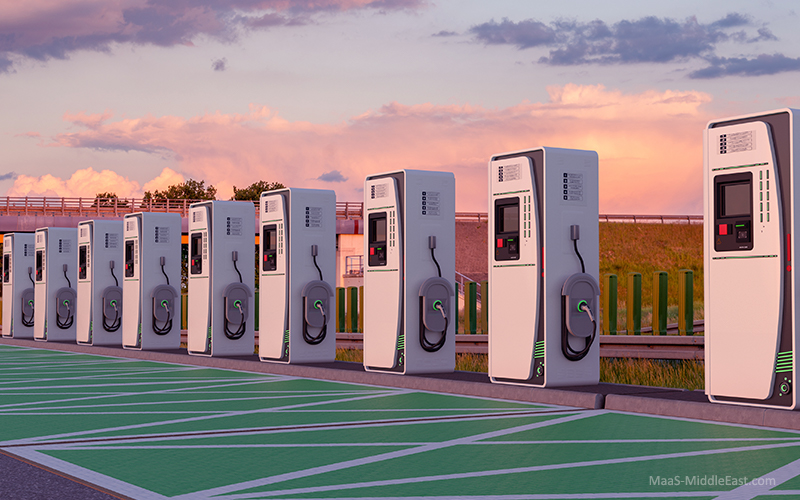Overview
In the last 20 years, electric vehicles have experienced significant technological developments that have not only lowered their costs but also reduced their environmental footprint and increased their utility. As electric vehicles do not have combustion engines, they avoid the emission of tons of greenhouse gasses, which in turn helps in the fight against the effects of climate change. The potential benefits of electric mobility for low- and middle-income countries go well beyond decarbonization to include: promoting inclusive mobility, improving local air quality, and bolstering energy security.
Electric vehicles come at a cost premium, sometimes more than 70% compared to conventional vehicles, creating a financial hurdle for many consumers in developing countries like China, the UK, the USA, Germany, and many more.
EVs made up the majority of car sales last year in two countries: Norway, way ahead of everyone else at 86%, and Iceland, at 72%. Norway, Iceland, and Sweden also rank the highest when it comes to having the most EVs on the road per capita.
Measuring factors
With a share of almost 20%, the global transport sector is the third-largest contributor to CO2 emissions after electricity generation and industry. The following four main factors of readiness drive EV adoption:
Market readiness
The number of vehicles offered, the segments covered by them, product quality, design and concept creativity, as well as pricing all of these are included in market readiness.
Customer readiness
It is a very subjective matter, influenced by the general perception of EVs and the personal preferences of a customer.
Infrastructure readiness
Infrastructure readiness primarily comes down to the availability and performance of charging options (i.e., the number, distribution, and quality of public charge points). It is also a precondition to reach customer segments without private parking and charging opportunities.
Government readiness
Without specific incentives and legislative interventions, it is next to impossible to overcome this head start in the time required for climate protection. Different governments found different approaches to incentivize EVs and/or disincentivise ICE vehicles, which is analyzed in terms of their implementation and effectiveness.
EV adoption by country
Electric cars made up nearly 10% of total car sales globally last year, and a much higher share in many northern European countries. The Nordic nations — Norway, Iceland, Sweden, Denmark, and Finland — take the five top spots in the highest EV market penetration in 2021. Electric vehicle sales as a percentage of overall car sales in 2021 are Norway 86%, Iceland 72% Sweden 43%, Denmark 35%, Finland 31%, Netherlands 30%, Germany 26%, Switzerland 22%, Portugal 20%, United Kingdom 19%, France 19%, Belgium 18%, China 16%, Italy 9%, Spain 8%, Greece 7%, Canada 7%.
In Norway more than 85% of new vehicle sales in that country have been PHEVs. To further accelerate EV adoption, Norway suspended import taxes on EVs in 1990, decreased annual registration taxes in 2000, and slashed EV VAT to 0% in 2011.
EV Manufacturing
The EV industry in China is the largest in the world, accounting for about 57% of the global production of EVs and export of around 500,000 EVs in 2021. With over 2.2 million charging stations throughout the country.
In Singapore the government has been clear about its encouragement of EV adoption through its announcement in March 2021 that all new car and taxi registrations will need to be clean energy models from 2030 onward, and that all vehicles on roads will need to run on clean energy by 2040.
In 2021, in the United Kingdom nearly one out of five vehicles sold were electric. The public and semi-public charging infrastructure stood at around 39,000 charge points, of which only 1,200 were less than 150 kW DC fast chargers. The country aims for at least six rapid charge points at every motorway service area by 2023.
The US has one of the highest motorization rates across the globe, with nearly 850 cars per 1,000 inhabitants, which establishes the potential of the market. The rise of Tesla arguably kicked off the electric mobility movement across the globe and revived the US automotive industry.
EV sales as a percentage of total auto sales for Japan were below 1% for 2021, with an estimated annual sales volume of about 42,000 units. However, while EV adoption has been low, recent initiatives taken by the government are expected to bring a much-needed boost to electrification.
Top Countries in Electric Mobility Readiness
1- Norway
4 out of 25 passenger cars in Norway’s vehicle fleet had an electric powertrain in 2021. The Norwegian Parliament has decided on a national goal that all new cars sold by 2025 should be zero-emission (electric or hydrogen). By February 2022, there were more than 470.000 registered battery electric cars (BEVs) in Norway.
2- China
China has become the world leader in EV manufacturing. And when it comes to the total number of electric cars sold, China is already far outpacing every other country.
3- Germany
Germany has committed to reducing CO2 emissions by 55% by 2030. Estimates indicate that eight million electric vehicles could be on the roads in Germany by 2030.
4- Singapore
Singapore aims to develop a greener and more sustainable land transport sector, reducing peak land transport emissions by 80%, by or around mid-century. The Singapore Green Plan 2030 includes a strong push to electrify the vehicle population, which would help Singapore achieve the vision of 100% cleaner energy vehicles by 2040.
The Emerging EV Markets we see in the US, Japan, UAE, and Thailand have established a position in the market.
5- United Kingdom
Uk intends to end the sale of new petrol and diesel petrol and diesel vehicles by 2030, for all new cars and vans to be fully zero emission at the tailpipe by 2035.
6- United States
The European Union presented its “Fit for 55” program, which seeks to align climate, energy, land use, transport, and taxation policies to reduce net greenhouse gas emissions by at least 55% by 2030, and the Biden administration introduced a 50% electric vehicle (EV) target for 2030.
7- Japan
In Japan, although e-mobility had been on the agenda before, it wasn’t until 2009 when Prime Minister Hatoyama promised to cut carbon dioxide emissions. Japan aims to increase the share of next-generation vehicles in new vehicle sales to 50 – 70% by 2030, of which battery electric vehicles (BEVs) and plug-in hybrid electric vehicles (PHEVs) should account for 20-30% and hybrid electric vehicles (HEVs) for 30-40%.
A group of starter countries, Mexico, India, Brazil, Indonesia, Vietnam, and South Africa are focusing on EV mobility.
8– United Arab Emirates
The UAE electric vehicle market is currently in its early stage and witnessed certain growth during the period 2018-2021 owing to the Electric Vehicle (EV) Green Charger initiative undertaken by the government of UAE. It has converted 20% of government agency cars to EVs and further intends to reach 42,000 EVs on the streets by 2030.
Today, the UAE has one of the biggest charging stations-to-vehicle-ratios in the world. Dubai’s EV Green Charger initiative was launched in 2015 to increase the number of charging stations. Since then, the network has expanded and, as of this writing, the country has 325 charging stations. To promote the use of EVs, Dubai Electricity & Water Authority and Road Transport Authority are working jointly on incentives like free parking, exemption from tolls, and reduced registration fees. They aim to make public transport emission-free by 2050.





